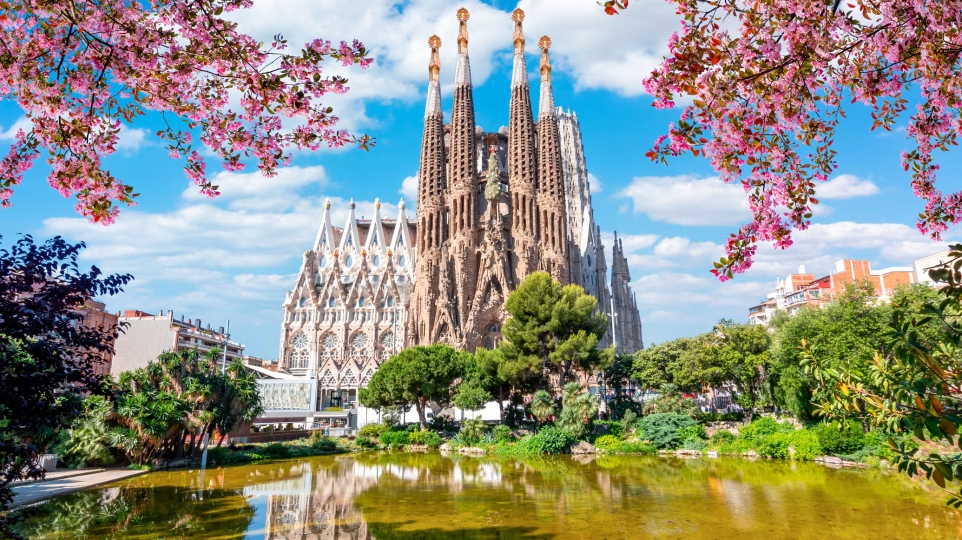Discovering Barcelona : A Rich Historical Tapestry and Top 10 Things to Do
Introduction: The Enchanting History of Barcelona
Barcelona, the vibrant capital of Catalonia, is one of Europe’s most captivating cities. Renowned for its distinctive architecture, artistic legacy, and Mediterranean allure, the city’s history spans more than two millennia. From Roman origins to its rise as a global cultural hub, Barcelona offers a unique blend of the old and new, making it an unmissable destination.
Barcelona’s Historical Journey
Ancient Beginnings: Roman Barcino Barcelona’s history dates back to Roman times when it was established as Barcino around 15 BC. A small Roman colony, Barcino was strategically located along the Mediterranean coast and surrounded by imposing city walls, remnants of which can still be seen in the Gothic Quarter today. The city became an important trade center and part of the Roman Empire’s vast network of settlements.
Medieval Barcelona: A Growing Trade Hub During the medieval period, Barcelona grew in prominence as a major Mediterranean port. By the 12th century, it became the capital of the County of Barcelona and eventually merged with the Kingdom of Aragon through the marriage of Count Ramon Berenguer IV and Queen Petronila of Aragon. This unification laid the groundwork for Barcelona’s role as a maritime power, dominating trade routes and expanding its influence across the Mediterranean. The Gothic Quarter, with its winding streets and medieval architecture, still echoes the city’s medieval past.
Modernism and Catalan Identity Barcelona’s identity is deeply tied to the Modernisme movement of the late 19th and early 20th centuries, which coincided with a resurgence of Catalan nationalism. This era saw the rise of visionary architects like Antoni Gaudí, whose masterpieces like La Sagrada Família and Park Güell became symbols of the city’s artistic and cultural renaissance. This period was crucial for establishing Barcelona’s distinctive Catalan identity, which remains an integral part of its culture today.
The Spanish Civil War and Post-War Period Barcelona played a significant role in the Spanish Civil War (1936-1939), aligning with the Republican cause against Franco’s Nationalists. The city endured heavy bombardment and social upheaval during the war. After Franco’s victory, Catalonia’s distinct language and culture were repressed. However, with the fall of Franco’s regime in 1975 and Spain’s transition to democracy, Barcelona reemerged as a thriving, modern city, hosting the 1992 Olympic Games, which marked its transformation into a global destination.
Barcelona Today Today, Barcelona is a global hub for art, architecture, and cuisine, attracting millions of visitors annually. It is a city where the past and present coexist harmoniously, offering travelers a chance to explore its historical layers while enjoying modern comforts.
10 Best Things to Do in Barcelona
Now that we’ve explored Barcelona’s rich history, here are the top 10 things you must do when visiting this beautiful city.
1. Explore La Sagrada Família Antoni Gaudí’s unfinished masterpiece, La Sagrada Família, is arguably the most iconic symbol of Barcelona. This towering basilica, with its intricate facades and awe-inspiring interior, is a UNESCO World Heritage site and remains a must-see for any visitor. The ongoing construction only adds to its intrigue as one of the longest architectural projects in history.
2. Stroll Through the Gothic Quarter The Barri Gòtic (Gothic Quarter) is the heart of old Barcelona, where you can wander through narrow, medieval streets, stumble upon hidden squares, and admire centuries-old Gothic buildings. The Barcelona Cathedral and remnants of the Roman walls are highlights in this area that harks back to the city’s origins.
3. Visit Park Güell Another Gaudí creation, Park Güell is a whimsical public park filled with colorful mosaics, winding pathways, and stunning views of Barcelona. The park’s Serpentine Bench and El Drac (The Dragon) mosaic are particularly famous, showcasing Gaudí’s signature organic, playful style.
4. Admire Casa Batlló and Casa Milà Two of Gaudí’s most renowned residential buildings, Casa Batlló and Casa Milà (also known as La Pedrera), are located on the prestigious Passeig de Gràcia. These surreal, flowing structures are quintessential examples of Modernisme and offer guided tours of their dreamlike interiors.
5. Relax at Barceloneta Beach No trip to Barcelona is complete without a visit to Barceloneta Beach, where you can unwind by the Mediterranean Sea. Whether you’re sunbathing, swimming, or dining at seaside restaurants, this beach provides a perfect escape from the urban bustle.
6. Discover the Magic of Montjuïc Montjuïc Hill is home to several attractions, including the Magic Fountain, which hosts captivating light and water shows at night. The hill also boasts the Museu Nacional d’Art de Catalunya (MNAC), offering a vast collection of Catalan art, and the historic Montjuïc Castle, providing panoramic views of the city and harbor.
7. Indulge in Catalan Cuisine Barcelona is a food lover’s paradise. Make sure to savor traditional Catalan dishes such as pa amb tomàquet (bread with tomato), escudella (a hearty meat stew), and crema catalana (a rich, caramelized custard). Don’t miss out on the city’s vibrant tapas scene, which is best experienced in the bustling El Born and Barceloneta neighborhoods.
8. Experience La Mercè Festival If you visit in late September, don’t miss La Mercè Festival, Barcelona’s largest street party. This festival celebrates the city’s patron saint, La Mercè, with parades, concerts, human towers (castellers), and stunning firework displays (correfocs).
9. Visit Camp Nou Football fans should not miss the chance to visit Camp Nou, the iconic home of FC Barcelona. Take a stadium tour, explore the museum, and immerse yourself in the history of one of the world’s greatest football clubs.
10. Wander Through El Born The El Born district is known for its bohemian atmosphere, vibrant nightlife, and cultural landmarks like the Picasso Museum and Santa Maria del Mar Basilica. It’s a perfect place to enjoy a mix of history, art, and local flavor, with plenty of trendy boutiques and tapas bars to explore.
Are you interested in places to visit for sightseeing in Ibiza?
Conclusion: Barcelona – Where History Meets Modernity
Barcelona’s blend of ancient history, modernist architecture, and Mediterranean culture make it one of the most fascinating cities in the world. Whether you’re exploring Roman ruins, marveling at Gaudí’s visionary work, or simply relaxing by the sea, Barcelona offers a unique experience that captures the essence of both its past and present. With its rich history and endless attractions, it’s no wonder this city is on every traveler’s bucket list.


